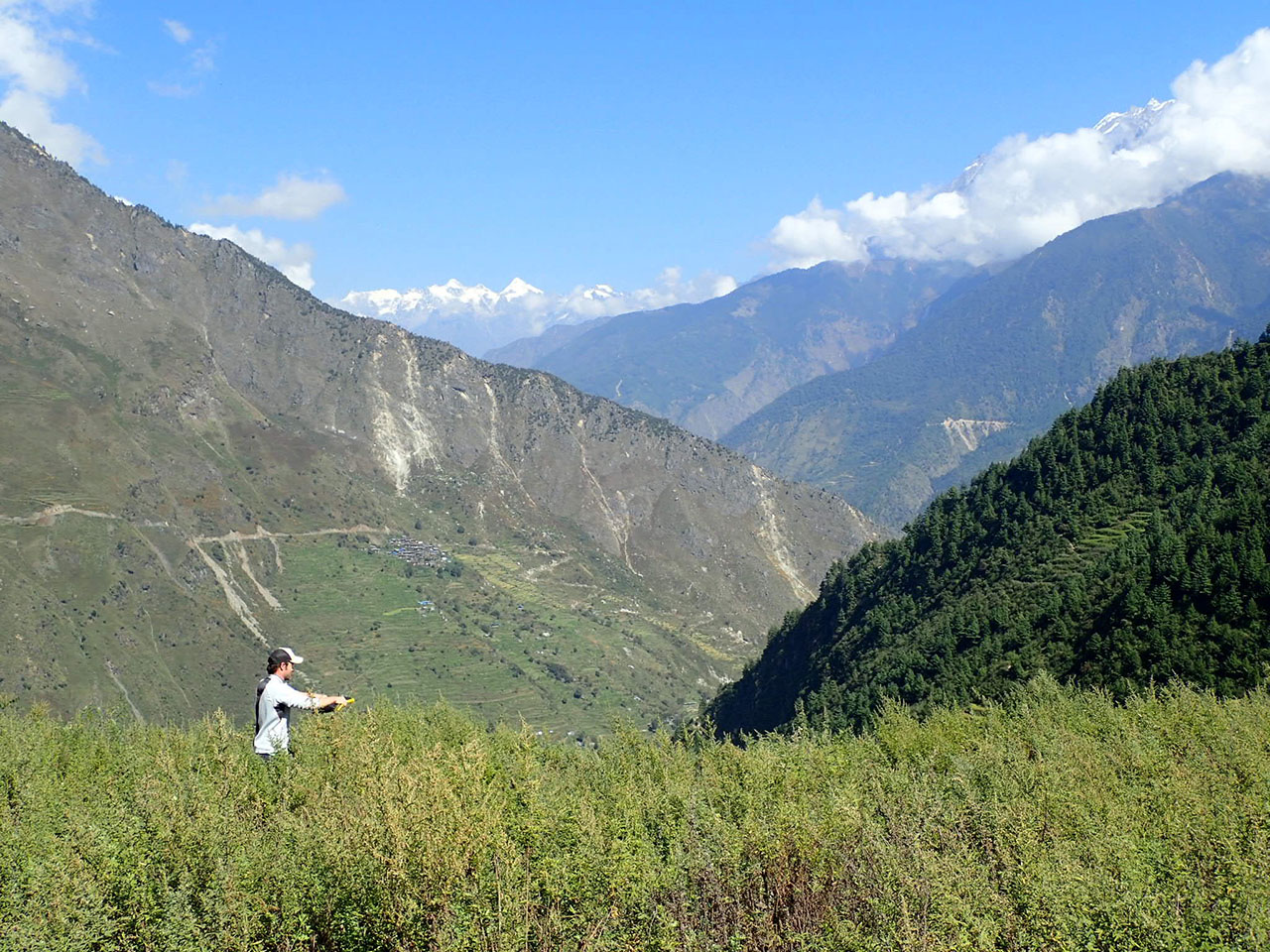Landscape response to the 2015 Gorkha earthquake, Nepal
Large upper crustal earthquakes in mountainous settings can result in widespread and catastrophic mass-wasting. The Mw 7.8 Gorkha Earthquake caused tens of thousands of landslides in Central Nepal during the April 2015 event.

In this study, we are using the Gorkha earthquake as a case-study to assess the role of coseismic landsliding on unsteadiness in long-term erosional budgets and sediment transport processes. We are using cosmogenic nuclide concentrations in fluvial detritus collected from Himalayan rivers to document spatial and temporal changes in erosion and sediment transport processes in the aftermath of the earthquake. In addition, computer models provide a further understanding of the ways in which large earthquakes effect the evolution of tectonically active mountains over geologic timescales. This work is in collaboration with the ETH Biogeoscience group.
People
Katie Schide
Biogeoscience Group Collaborators
Dr. Maarten Lupker
Lena Märki
